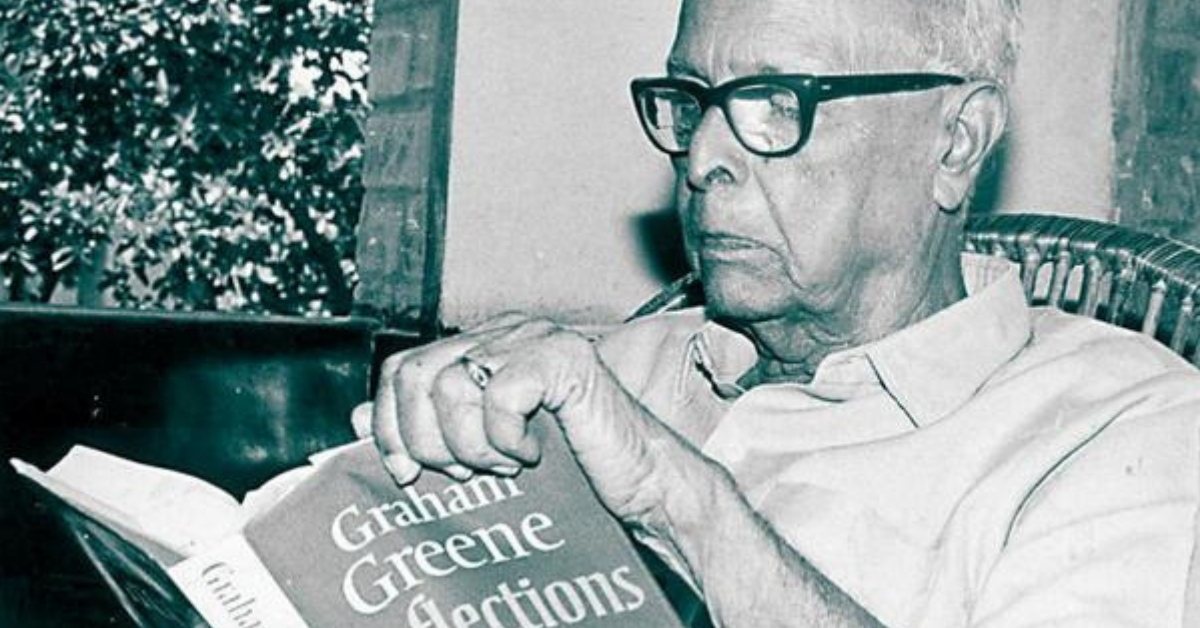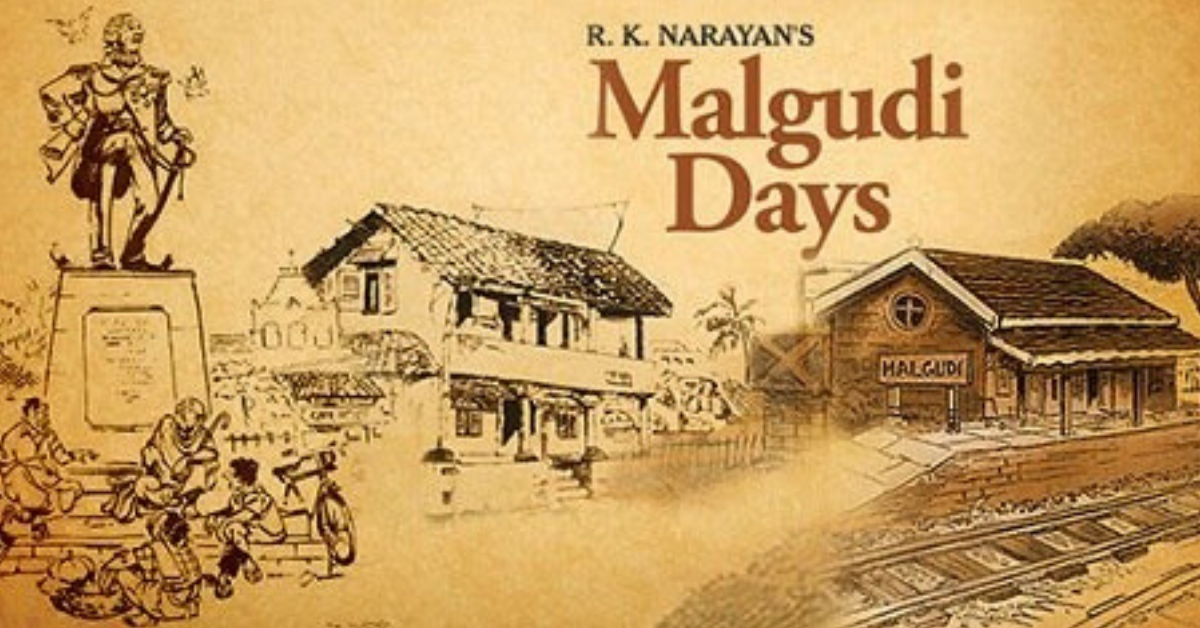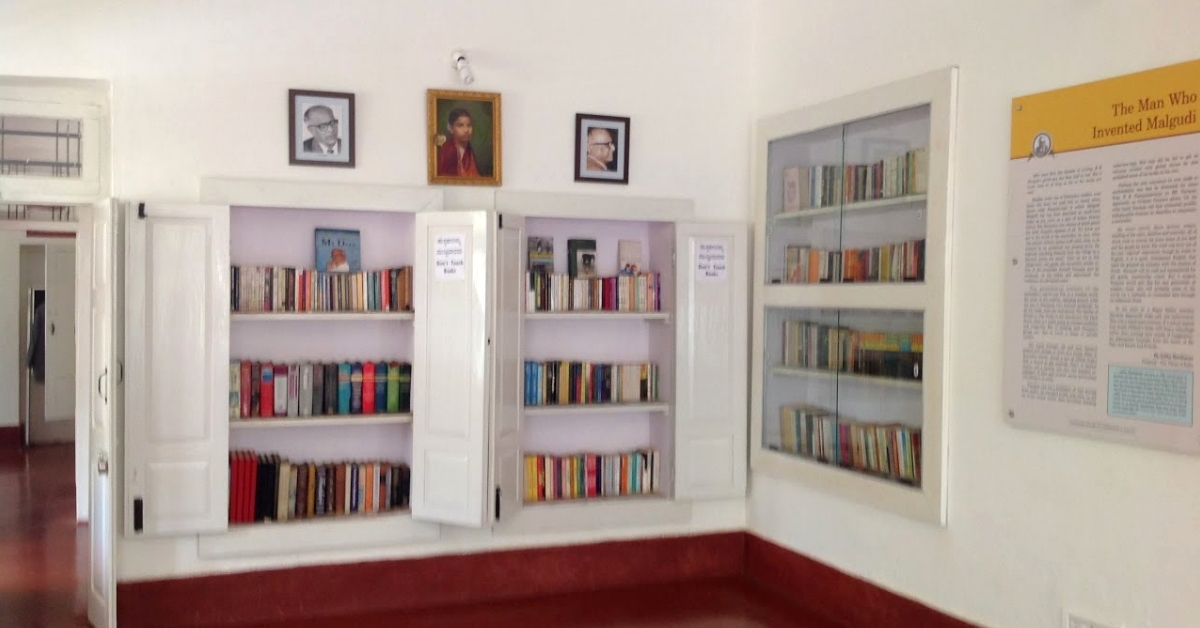Malgudi Days: Do You Know Which of These Two B’Luru Localities Inspired RK Narayan?
As I sat in a room nibbling at my pen and wondering what to write, Malgudi with its little railway station swam into view, all ready-made, with a character called Swaminathan running down the platform.”

For millions of Indians, the TV show Malgudi days was an irreplaceable part of their childhood. The iconic railway station, the busy Market Street and the simplicity of the timeless town, is ingrained in our memories. The storyline, effortless humour and lifestyle were so relatable that somehow the fans of the show wanted to ask RK Narayan where Malgudi was.
In his introduction to Malgudi Days (1942), Narayan writes, “I am often asked, ‘Where is Malgudi?’ All I can say is that it is imaginary and not to be found on any map (although the University of Chicago Press has published a literary atlas with a map of India indicating the location of Malgudi). If I explain that Malgudi is a small town in South India, I shall only be expressing a half-truth, for the characteristics of Malgudi seem to me, universal.”
But even if Malgudi is a fictional place, it must have taken inspiration from someplace? The vibe, outfits and lifestyle of Malgudians are obvious. RK Narayan had also defended these cultural specifics when Vijay Anand and Tad Danielewski, the directors of “The Guide” had suggested Jaipur as the setting.
“My story takes place in South India, in Malgudi, an imaginary town known to thousands of my readers all over the world.

It is South-Indian in costume, tone and content. Although the whole country is one, there are diversities, and one has to be faithful in delineating them. You have to stick to my geography and sociology. Although it is a world of fiction, there are certain inner veracities,” RK Narayan had said.
It was in Bengaluru that Narayan had conceived the idea of Malgudi and started writing the evergreen novel. “As I sat in a room nibbling at my pen and wondering what to write, Malgudi with its little railway station swam into view, all ready-made, with a character called Swaminathan running down the platform,” he said.
Many have reason to believe that Malgudi is inspired from two places in the old Bengaluru city—Malleswaram and Basavanagudi. “Mal” from the former place and “Gudi” from the latter together form the name of our favourite fictional town.
Zac O’Yeah, writes in the Hindu Business Line, “And considering that of the two, Malleshwaram, founded as a model suburb in the 1890s, has a significant Tamil population, it does seem the likeliest candidate. Furthermore, Malleshwaram has a small railway station which was utterly charming back then, according to those who remember the original building, and would have inspired the initial scene Narayan wrote on that September day.”
Basavanagudi, on the other hand, features the “Street Bazaar” like the Market Street of Malgudi.

The houses along the streets, that now have a modern look once used to have tiled roofs. One such house, according to Kiren Keswani, who teaches at the Azim Premji University, still stands to face the Tagore circle.
Several more towns in South India have been often compared to Malgudi, suggesting that Malgudi could not be inspired by just one town or city. Agumbe, Mysuru and Krishnarajnagara (or KR Nagar) have shown some features very close to what Narayan had pictured for his novels.
Mysuru is a favourite city of such theorists and for a good reason too. When Anita Rao Kashi, a journalist with the Economic Times visited the Railway station in the Karnataka city, she could see the Malgudi railway station flash in front of her eyes.
You may also like: Critically Acclaimed TV Series ‘Malgudi Days’ Is Now Available For Online Viewing. For Free.
“It’s not surprising actually. Narayan’s home in Lakshmipuram is just 10-15 minutes away, and it is well known that he went on long walks every morning, sometimes traversing almost 12 km in the neighbourhood. The walks provided fodder for his work, and it is possible that the station could have been part of this routine,” she was told.
The city also features a museum dedicated to the legendary writer.

For Sunita Raghu, a writer at the New Indian Express, the town of Krishnarajnagara (or KR Nagar) is a shadow of Malgudi. “KR Nagar seemed to scream Malgudi ever since I first stepped foot here. For starters, river Kaveri which can be found just a few kilometres away from the town could be the river Sarayu. The ancient temple of Lord Arkeshwara (Shiva) forming a perfect backdrop and attracting devotees from far and near, could mirror the Sthala-Purana setting of many a temple in the novel,” she writes. A “Bazaar road” in the middle of the town completes the picture for her.
You may also like: Malgudi Revisted: Remembering R K Narayan, the Master Storyteller Who Enchanted a Nation
O’Yeah, when he reached Agumbe exclaimed saying, “Ah, finally I’m in Malgudi! Everything looks like the TV series but less crowded. There are barely any people. No cars.” It was here that the TV series inspired by Narayan’s novels was shot and everything, from people to the atmosphere, O’Yeah claims, reflects the energy of Malgudi.
Such parallels suggest that Malgudi was not inspired by one place, and is instead a confluence of several cities and their individual factors. Narayan himself was not too fond of being asked about Malgudi and maybe rightly so. His Malgudi, featuring the iconic moments and stories, is perhaps, best located in our hearts and memories.
(Edited by Gayatri Mishra)
Like this story? Or have something to share?
Write to us: [email protected]
Connect with us on Facebook and Twitter.
If you found our stories insightful, informative, or even just enjoyable, we invite you to consider making a voluntary payment to support the work we do at The Better India. Your contribution helps us continue producing quality content that educates, inspires, and drives positive change.
Choose one of the payment options below for your contribution-
By paying for the stories you value, you directly contribute to sustaining our efforts focused on making a difference in the world. Together, let’s ensure that impactful stories continue to be told and shared, enriching lives and communities alike.
Thank you for your support. Here are some frequently asked questions you might find helpful to know why you are contributing?


This story made me
- 97
- 121
- 89
- 167










